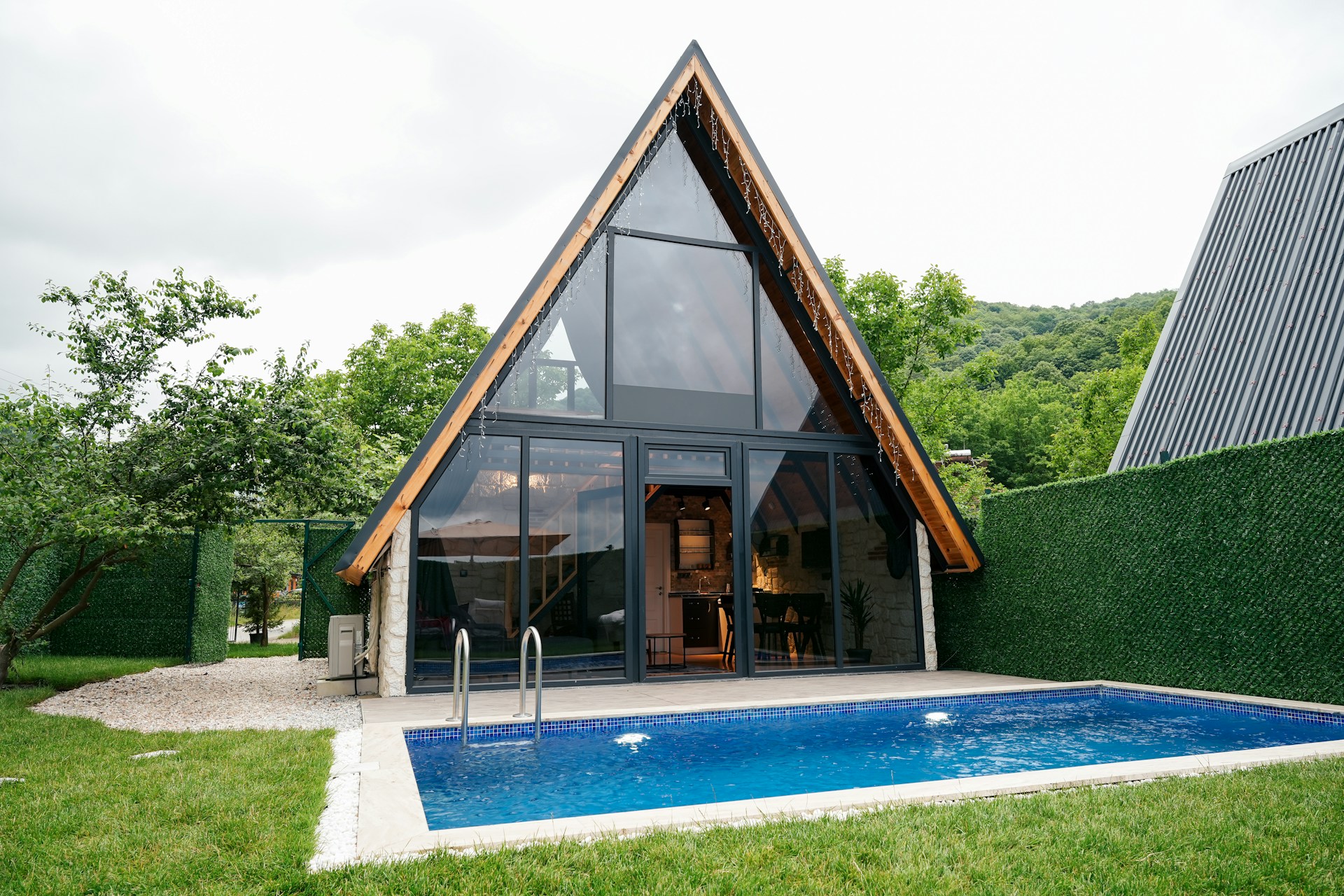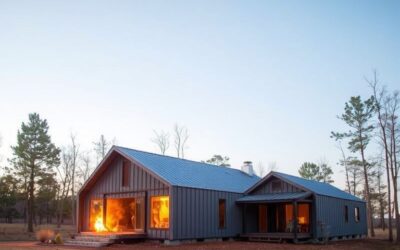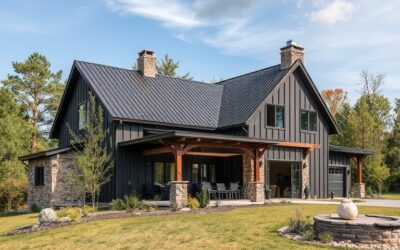Fire resistance is key when building a safe, durable home—and steel makes it easy. Choosing the right materials can make a significant difference in how well your home can withstand fires. Steel homes offer exceptional fire resistance, providing homeowners with added protection and peace of mind. This advantage makes steel a preferred choice for constructing residential properties designed to keep families safe.
Understanding Fire Resistance in Building Materials
Fire resistance matters—especially when it comes to keeping homes safe from potential hazards. Different materials react differently to fire, impacting how quickly flames spread and how long structures remain stable under high temperatures. When choosing materials for your home, it’s crucial to consider these factors to enhance safety and durability.
Wood is highly combustible—once it catches fire, it spreads fast. This characteristic makes wood a less desirable choice for areas prone to wildfires or other fire risks. In contrast, materials like steel are non-combustible, meaning they do not catch fire easily and contribute less to a fire’s intensity.
Materials are rated for fire resistance based on how long they can withstand fire exposure without failing. These ratings help builders and homeowners make informed decisions about the safety of different building products. By understanding the fire resistance properties of various materials, you can choose the best options to protect your home and family from fire hazards effectively.
The Science Behind Steel’s Fire-Resistant Properties
Steel’s fire resistance comes down to its chemistry and structure. Unlike wood, steel does not combust, meaning it won’t catch fire and fuel the flames. Instead, steel can withstand extremely high temperatures without losing its structural integrity, making it an ideal material for constructing fire-resistant homes.
One of the key features that contribute to steel’s fire resistance is its high melting point. Steel weakens only at temperatures above 1000°F—way higher than when wood fails. This high melting point ensures that steel maintains its strength for much longer during a fire, providing crucial time for occupants to evacuate and for firefighters to control the blaze.
In addition to its high melting point, steel also has excellent thermal conductivity. This property allows steel to dissipate heat efficiently, reducing the chances of localized hot spots that can lead to structural collapse. As a result, steel buildings are generally more stable during fires, offering enhanced protection for both the structure and its occupants.
Using steel in home construction minimizes the risk of fire spreading rapidly, giving firefighters a better chance to contain and extinguish the fire. This characteristic, combined with steel’s ability to maintain its structural integrity under extreme heat, makes it a superior choice for building homes that prioritize fire safety.
Comparing Steel Homes to Traditional Wood-Framed Homes
When evaluating steel homes against traditional wood-framed homes, one of the most significant differences is fire resistance. Wood is a combustible material, which means it can easily catch fire and propagate flames throughout the structure. Wood-framed homes are at a higher risk in fire-prone areas, which can be a serious safety concern.
Steel, on the other hand, offers robust fire resistance. Because steel is non-combustible, it does not act as fuel for the fire, significantly slowing the spread of flames. This non-combustible nature ensures that the fire does not consume the structural elements of the home, providing greater overall safety. Additionally, steel maintains its strength longer under high-temperature conditions, allowing more time for occupants to evacuate safely.
Another advantage of steel homes is their durability. Steel can withstand various environmental challenges, including pests, moisture, and severe weather conditions, which can also contribute indirectly to fire safety. Unlike wood, which can weaken due to rot or termites, the structural integrity of steel remains largely unaffected by these factors, providing a more reliable and long-lasting home.
Additional Fire Safety Benefits of Steel Homes
Steel homes offer more than just fire resistance—they come with extra safety perks. One significant advantage is their design flexibility, which allows for the incorporation of advanced fire-resistant building techniques and materials. For instance, steel homes can easily integrate fireproof insulation and barriers that further enhance overall fire resistance.
Another benefit is the reduced risk of structural collapse during a fire. Steel’s high melting point and resistance to weakening at lower temperatures mean that the building remains stable for a longer period. This stability can be crucial in preventing collapse, offering a safer environment for both occupants and emergency responders.
Moreover, steel framing can be combined with other fire-resistant materials to construct walls, ceilings, and roofs that offer additional layers of fire protection. This layered protection creates a safer home and better controls potential fires. Features such as fire-rated doors and windows can also be incorporated into steel homes, enhancing their overall fire safety profile.
Steel homes also contribute to community fire safety. By reducing the likelihood of one building spreading fire to its neighbors, steel homes help create safer neighborhoods. This community-wide benefit makes steel construction an excellent choice for residential developments aiming to prioritize fire safety.
Conclusion
Steel homes give you unmatched fire resistance and a safer living environment. From understanding the properties of fire-resistant materials to comparing the benefits of steel versus wood, it’s clear that steel’s non-combustible nature and high melting point make it a superior choice for home construction.
The additional benefits of steel homes, such as their flexibility for integrating fire-resistant features and reduced risk of collapse during a fire, further underscore their value. By choosing steel construction, homeowners contribute to safer communities and enjoy the peace of mind that comes with living in a fire-resistant home.
If you are considering building a new home or looking to upgrade your current one, explore the advantages of steel construction. Contact Wink Panels LLC today to learn more about how our all-steel homes can provide you with superior fire resistance and unparalleled safety. Make the smart choice for your family’s safety now!




